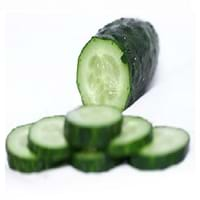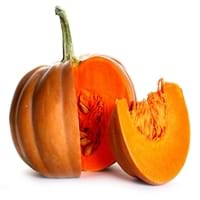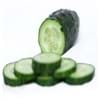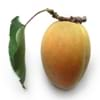Health Benefits
Arthritis treatment, Cancer prevention, Eczema treatment, Increases metabolic rate, Kidney stone treatment, Prevents constipation, Removes toxic metals, Treatment of alzheimer's disease
Arthritis treatment, Cancer prevention, High Cholesterol Regulation, Lower blood pressure, Helps Prevent cataract, Prevents gall stones, Ulcer treatment, Weight loss properties
General Benefits
Anti oxidant properties, Anti-inflammatory properties, Controls blood pressure, Digestive aid, Strengthens bones, Treatment of sore eyes
Boosts respiratory health, Eliminate parasites and infections, Protects against birth defects, Strengthens bones
Skin Benefits
Heals sunburn, Hydrates skin, Skin rejuvenation, Skin revitalization, Treatment of dark spots, Treatment of skin diseases
Heals sunburn, Hydrates skin, Skin rejuvenation
Hair Benefits
Promotes longer and healthier hair, Protects hair, Regulates hair growth, Shiny hair
Regulates hair growth
Allergy Symptoms
Breathing difficulty, Decrease in blood pressure, Diarrhea, Itching, Red rash, Runny nose, Sneezing, Vomiting, Watery eyes
Abdominal cramps, Anaphylaxis, Digestive Problems, Dizziness, Eczema, Fainting, Hives, Inflammation, Itching, Tingling sensation in wrist and face, Vomiting, Wheezing
Side Effects
Stressed heart, Irritation, Swelling, Swelling around mouth, Throat swelling, Tongue swelling, Strained blood vessels
Kidney and gallbladder diseases
Lactating Women
Not Available
Yes
Best Time to Eat
Along with meal, As a snack in the late afternoon, Eat the fresh ones, avoid mixing with any other foods, don't eat after meal., Strictly avoid empty stomach
Along with meal, Don't eat after meal, Morning time (before lunch)
Vitamin B5 (Pantothenic Acid)
Vitamin C (Ascorbic Acid)
Vitamin K (Phyllochinone)
Calories in Fresh Fruit with Peel
Calories in Fresh Fruit without Peel
Calories in Frozen Form
Not Available
Not Available
Calories in Dried Form
Not Available
Not Available
Calories in Canned Form
Not Available
Calories in Juice
Not Available
Calories in Jam
Not Available
Calories in Pie
Not Available
Type
Fruit vegetable, Melon
Berry
Season
Spring, Summer
All seasons
Varieties
Armenian, English, Garden, Kirby, Lemon and Persian
Jarrahdale, Peanut, Lakota, Cow, Sugar, Caribean, Red kuri, Buttercup and Pink lady
Color
Dark green, Green
Blue, Green, Orange, Red, White
Inside Color
White
Creamy Yellow
Taste
Juicy, Watery
Creamy, Soft, Sweet
Soil Type
Loam
Clay loam, Sandy loam, Well-drained
Climatic Conditions
Warm
Warm to hot climate
Facts about
- Outer waxy coating of cucumber can erase the pen writing.
- Pressing cucumber on roof of mouth for 30 sec will eliminate bad breath.
- It is made up of 96% water.
- English cucumber can grow longer than 2 feet.
- The name pumpkin has its roots in the Greek word ‘pepon’, meaning ‘large melon’.
- The largest pumpkin ever grown weighed 1,140 pounds.
- Pumpkins were once known for removing freckles & curing snake bites.
Other Countries
Egypt, Indonesia, Iran, Japan, Russia, Spain, Turkey, Ukraine, United States of America
Egypt, India, Indonesia, Iran, Italy, Mexico, Russia, Spain, United States of America
Top Importer
France
United States of America
Botanical Name
Cucumis sativus
Cucurbita maxima
Synonym
Not Available
Cucurbita pepo, Squash
Subkingdom
Tracheobionta
Tracheobionta
Division
Magnoliophyta
Magnoliophyta
Class
Magnoliopsida
Magnoliopsida
Subclass
Dillenhidae
Dillenhidae
Order
Cucurbitales
Cucurbitales
Family
Cucurbitaceae
Cucurbitaceae
Species
C. sativus
Cucurbita mixta
Generic Group
Not Available
Not Available
Difference Between Cucumber and Pumpkin
We might think that Cucumber and Pumpkin are similar with respect to nutritional value and health benefits. But the nutrient content of both fruits is different. Cucumber and Pumpkin Facts such as their taste, shape, color, and size are also distinct. The difference between Cucumber and Pumpkin is explained here.
The amount of calories in 100 gm of fresh Cucumber and Pumpkin with peel is 15.00 kcal and 26.00 kcal and the amount of calories without peel is 12.00 kcal and 30.00 kcal respectively. Thus, Cucumber and Pumpkin belong to Low Calorie Fruits and High Calorie Fruits category.These fruits might or might not differ with respect to their scientific classification. The order of Cucumber and Pumpkin is Cucurbitales and Cucurbitales respectively. Cucumber belongs to Cucurbitaceae family and Pumpkin belongs to Cucurbitaceae family. Cucumber belongs to Cucumis genus of C. sativus species and Pumpkin belongs to Cucurbita genus of Cucurbita mixta species. Beings plants, both fruits belong to Plantae Kingdom.









